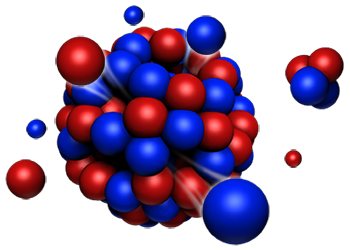Speaker
Description
Managing decay heat is an important safety concern for spallation facilities, but calculating the magnitude of decay heat relies on complex computer simulations which are difficult to validate. Of particular concern is the temperature rise due to decay heat in a loss-of-coolant accident (LOCA) scenario. Decay heats in an ISIS TS1 target were measured for cooling times between 1 minute and 2 weeks by switching off the cooling flow and measuring the temperature rises, essentially reproducing the first half hour of a cooling failure in a controlled way. The measurements, along with a simplified lumped thermal capacitance analysis, were recently published in two papers by D. Findlay et al. [1] [2]. The measured temperature rises were compared to simulations using a conjugate thermal-fluid model of the target in ANSYS CFX and decay heat values from the Monte Carlo code MCNPX. Simulations using this model produced a conservative but reasonably accurate estimate of temperature rise due to decay heat, as validated against the measured data. This is an important first step in establishing a reliable, experimentally validated approach for simulating temperatures in loss-of-coolant accident scenarios on this and other current and proposed spallation targets.
[1] D.J.S. Findlay et al., “Measurement and calculation of decay heat in ISIS spallation neutron target,” Nucl. Instr. Meth. A, vol. 908, pp. 91-96, 2018.
[2] G.M. Allen et al., “Decay heat in ISIS spallation neutron target as function of cooling time,” Nucl. Instr. Meth. A, vol. 933, pp. 8-11, 2019.

